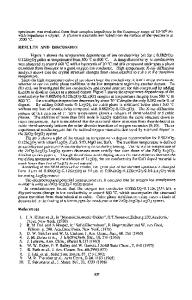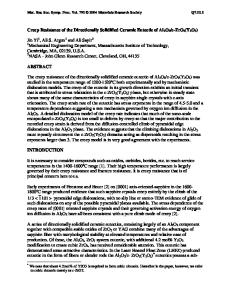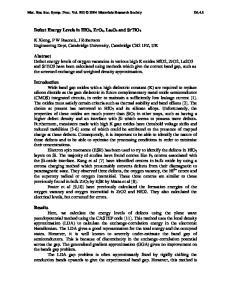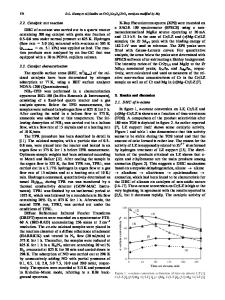Enhanced the electrochemical performances of LiNi 0.7 Co 0.15 Mn 0.15 O 2 cathodes by the hybrid ZrO 2 -Li 2 ZrO 3 layer
- PDF / 4,605,846 Bytes
- 11 Pages / 595.276 x 790.866 pts Page_size
- 31 Downloads / 308 Views
ORIGINAL PAPER
Enhanced the electrochemical performances of LiNi0.7Co0.15Mn0.15O2 cathodes by the hybrid ZrO2-Li2ZrO3 layer Wei Li 1,2,3 & Yunjiao Li 1,2,3 & LiShan Yang 4 & Jie Zhu 1,2,3 & Jia Guo 1,2,3 & Jia Chao Yang 1,2,3 Received: 16 October 2020 / Revised: 4 November 2020 / Accepted: 5 November 2020 # Springer-Verlag GmbH Germany, part of Springer Nature 2020
Abstract Electrode-electrolyte interface side reactions cause the fast capacity fading of Ni-rich cathode, especially at high cutoff voltages and high temperatures. This is the main obstacle for their commercial application. Herein, a hybrid ZrO2Li2ZrO3 (LZO) coating layer was fabricated through a wet process on LiNi0.7Co0.15Mn0.15O2 (NCM) cathode materials. The structure and chemical composition of the ZrO2-Li2ZrO3 coating layer were studied by the characterizations of XRD, SEM, TEM, and XPS. The ZrO2-Li2ZrO3-coated LiNi0.7Co0.15Mn0.15O2 cathode improved cycling stabilities at both 25 and 55 °C in the case of high cutoff voltage. In detail, ZrO2-Li2ZrO3-coated NCM (LZO-NCM) delivers a 187.40 mAh g−1 with 83.4% capacity retention after 100 cycles at 1C over 3.0–4.5 V, and it is far higher than that of uncoated sample (71.4%). At elevated temperature (55 °C), the ZrO2-Li2ZrO3-coated sample also maintains 79% capacity retention after 100 cycles (3.0–4.5 V, 1C), which is higher than the 61.5% capacity retention of the pristine electrode. The hybrid ZrO2-Li2ZrO3 coating could not only keep the bulk structure stability but also prevent the electrochemical resistance which varies after cycles. Thereby, the electrochemical properties were improved significantly. Keywords LiNi0.7Co0.15Mn0.15O2 . ZrO2-Li2ZrO3 coating layer . Side reaction . High voltage . High temperature
Introduction In the past decades, lithium-ion batteries (LIBs) have been rapidly developed and applied in most fields, especially in electric vehicles [1–4]. LIBs with high energy density are of significance in EVs to meet the requirement of longer endurance mileage [5, 6]. One of the most important factors affecting the LIB energy density is the cathode * Yunjiao Li [email protected]
material, among which the Ni-rich cathodes have attracted much attention because of its relatively high capacity [7–10]. Generally, the increase of capacity can be achieved by increasing the nickel content in Ni-rich cathodes and/or enhancing the cutoff voltage [11–15]. However, Ni-rich cathodes such as LiNi0.7Co0.15Mn0.15O2 and LiNi0.8Co0.1Mn0.1O2 have so far been retarded by electrode-electrolyte interface side 1
School of Metallurgy and Environment, Central South University, Changsha 410083, People’s Republic of China
2
Engineering Research Center of the Ministry of Education for Advanced Battery Materials, Central South University, Changsha 410083, People’s Republic of China
LiShan Yang [email protected]
3
Changsha Research Institute of Mining and Metallurgy, Changsha 410083, People’s Republic of China
Jie Zhu [email protected]
4
National & Local Joint Engineering Laboratory for New Petrochemica
Data Loading...











